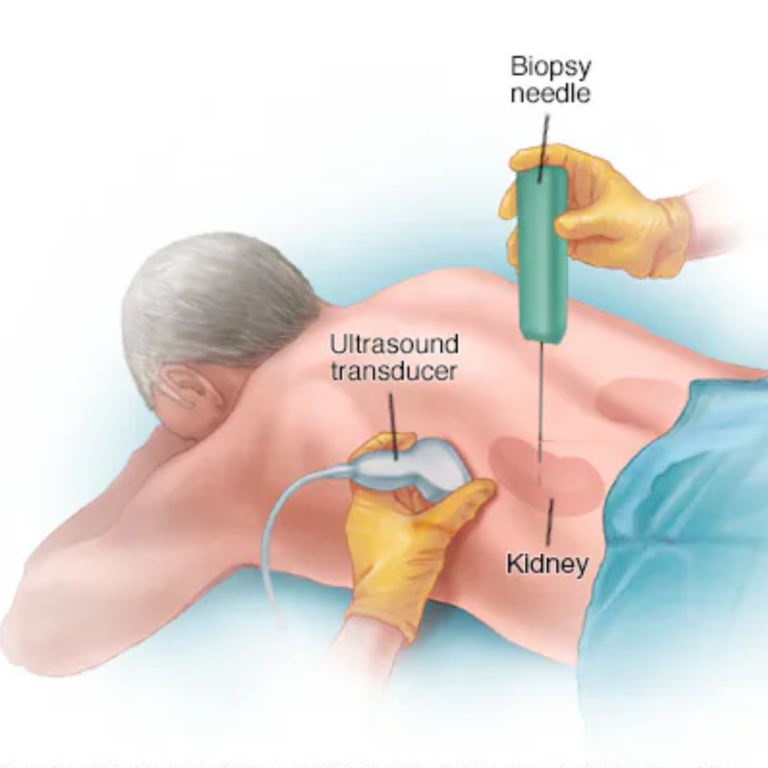

What is Renal Biopsy?
Renal Biopsy and Treatment
A renal biopsy, or kidney biopsy, is a diagnostic procedure where a small piece of kidney tissue is removed for examination. This procedure helps doctors diagnose kidney disorders, identify the exact type and severity of kidney disease, monitor disease progression, and evaluate how a kidney condition is progressing over time. Additionally, it assesses treatment effectiveness to determine how well a treatment is working.
Medications: immunosuppressants, which are used for autoimmune diseases affecting the kidneys; blood pressure medications, which help control high blood pressure and reduce further kidney damage; and diuretics, which aid in removing excess fluid and reducing swelling.
Kidney Transplant: For end-stage kidney disease, a kidney transplant may be considered.
Surgery: Rarely, surgical interventions might be necessary to remove obstructions or correct anatomical issues
FAQs
Your healthcare provider will provide specific instructions on how to prepare for the procedure, which may include fasting beforehand and temporarily stopping certain medications that could increase bleeding risk. It’s essential to follow these instructions carefully to ensure a safe and successful biopsy procedure.
A renal biopsy is performed to diagnose the exact type and severity of kidney disease, monitor how a kidney condition is progressing, and evaluate how well a treatment is working.
Under local anesthesia, a needle is inserted through the skin into the kidney to collect the tissue sample. Ultrasound or CT imaging is often used to guide the needle. Patients are monitored for several hours after the procedure to ensure there are no complications.
You will be asked to lie on your stomach. The area where the needle will be inserted is cleaned and numbed. You may feel some pressure or discomfort during the procedure, which usually takes about 30-60 minutes.
Risks include bleeding, infection, pain at the biopsy site, and, rarely, injury to surrounding organs. Most complications are minor and manageable.
You will be monitored for several hours to ensure there are no immediate complications. It is normal to experience some soreness and see a small amount of blood in your urine. Avoid strenuous activities for a few days.
